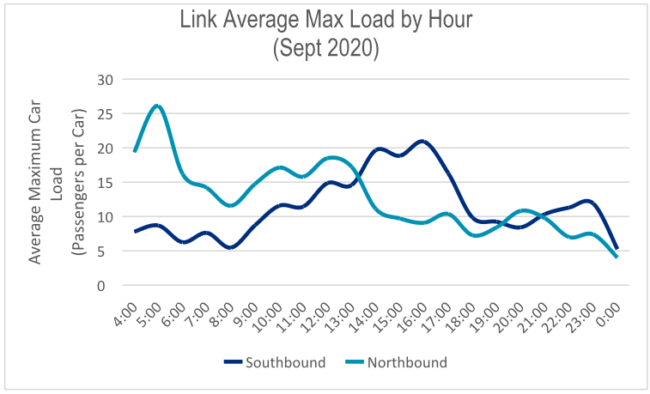An explanation of Link frequency
Two weeks ago I criticized Sound Transit's 2021 plans for another full year of substandard Link service. Now that I'm corresponding with someone who actually still works at Sound Transit, I was able to get a reply.
I had three concerns: (1) that a high-capacity trunk line should have high frequency even if ridership is low, (2) restoring most service to the peak is perverse if the problem is lower peak ridership, and (3) fears that ST would not be flexible enough to ramp up service as people returned to work in 2021.
The first is essentially unanswerable: it's not a data-driven argument, but ST can simply choose to meet previous expectations of its customers, and the assumptions that underpin the bus network, or not. But the data they provided does provide reassurance on the other fronts.
 Data for Sep 21-29, 2020.
Data for Sep 21-29, 2020.The takeaway from the graph above is that, at the current service levels, peak vehicle crowding remains fairly consistent throughout the day until the evening. ST targets every third seat being filled, and early results suggest they are hitting their goal.
As for flexibility, ST's John Gallagher conveys that Should we receive indication that ridership may significantly increase between service changes, we have some flexibility to add select trips to address overcrowding, much like we've done in the past for regional events (sports, parades, etc.)."